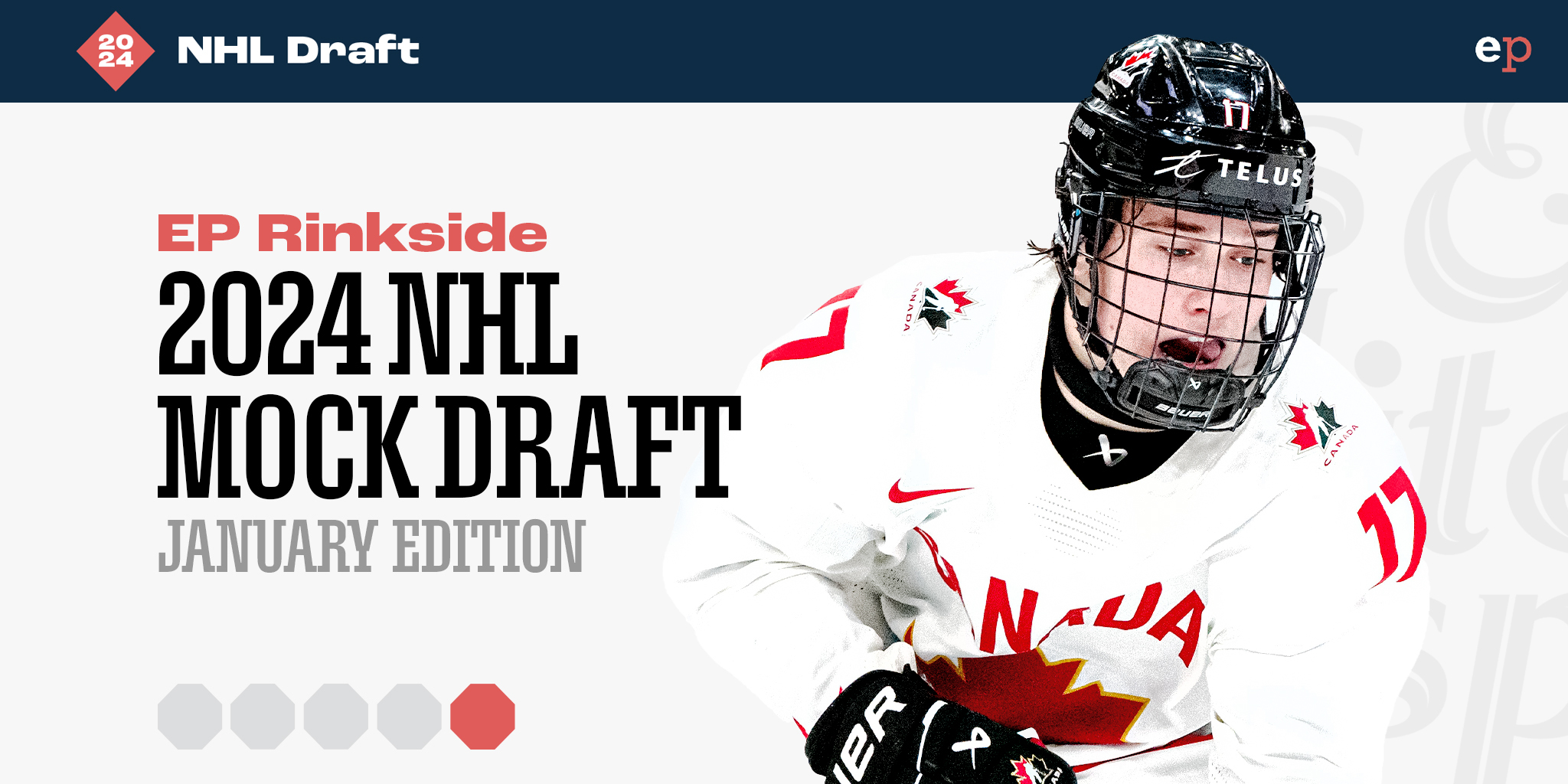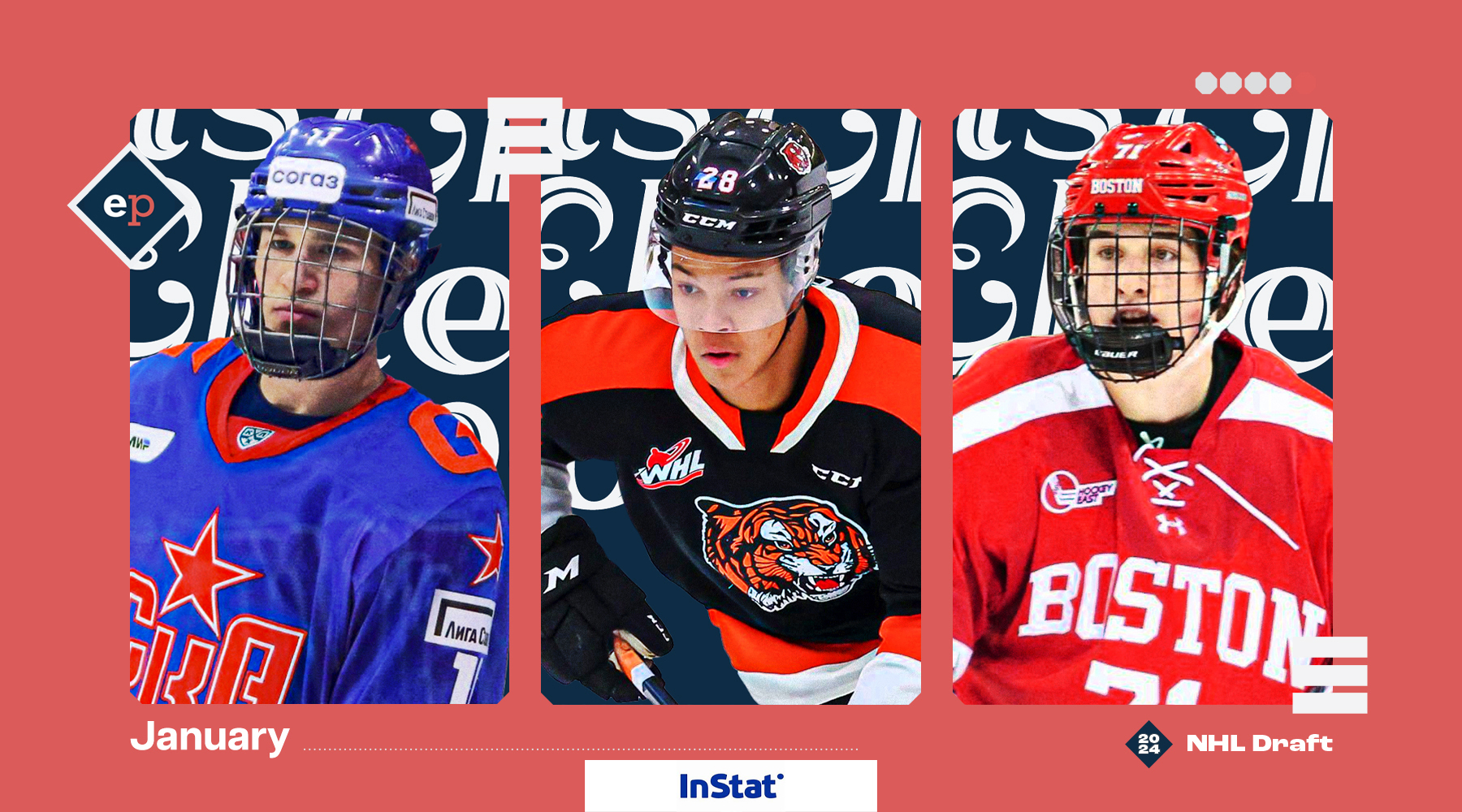WHL Stock Watch: Gavin McKenna already controlling the game

January was a hectic month in the WHL.
The January 10 trade deadline came and went quickly, and now the weeks are melting away.
Now, just seven weekends remain in regular season action, and the race for playoff remains tight. Out east, just six points separate teams five through nine.
In the chaos of January, the WHL's next superstar prospect has emerged as a challenger for the league's top player – two years before his draft season.
Stock Rising 📈
Gavin McKenna, LW, Medicine Hat Tigers (2026 NHL Draft)
It was clear in Gavin McKenna's four-assist WHL debut early last season that he wasn't the usual first-overall pick. Despite not being eligible for full-time play, he was already among the WHL's smartest, most skilled players every night he stepped on the ice.
This season, McKenna has been one of the league's best players, and in January, he was the best by far. In 12 games, he posted 10 goals and 19 assists for 29 points. More than halfway through the season, McKenna has more multi-point efforts (19) than pointless ones (13).
Over these last weeks, the WHL game has seemed significantly easier for McKenna. The vision, passing skill, and delay game in transition have been bolstered with breakneck rushes, electrifying handling skill, and non-stop energy. He has mastered the change-of-pace game already, constantly flipping between fast and slow to tear defences apart. Few use the trailer like him, and no one gets the puck off the boards in as many skillful, imaginative ways. He draws defenders into the cycle, only to explode off the boards with a quick move, attack the inside, and then trick the remaining opponents to create the best play.
Gavin McKenna in January:
— Mitchell Brown (@MitchLBrown) February 5, 2024
• 12 games
• 10 goals
• 19 assists (12 primaries)
• 46 SOG
• 8 multi-point games
• Goals 36-11 in his minutes #2026NHLDraft pic.twitter.com/p4niFeBxG1
Through 43 games, McKenna's scored 65 points. That 1.5-point-per-game clip is the second-best rate from a draft-minus-two player in WHL history, trailing only Connor Bedard's 15-game, 28-point campaign in the Covid bubble season.
McKenna's already controlling the game, with two more full WHL seasons before getting drafted.
Strap in.
Kenta Isogai, LW, Wenatchee Wild (2024 NHL Draft)
Few prospects have improved as much as Kenta Isogai over the last few years. When he was first draft-eligible in 2021, Isogai was a speedy, inside-driven forward who lacked foresight and playmaking.
Two years later, Isogai sits top-10 in WHL scoring and just two back for the even-strength point lead. He's been absolutely on fire since taking over the go-to offensive role, racking up 33 points in his last 18 games.
Isogai's game has shifted significantly, looking more translatable and skillful than before. Instead of using his speed to charge the net constantly, he cuts across the defence, delays for support, and works the give-and-go now. His speed creates space for teammates. He even flashes high-level offensive thinking by shifting the defence to create passing and shooting lanes. As he learns to slow the game down, the handling skill and inside drives have become even more effective.
Because Isogai's still figuring out how to best use his skills, he looks less like a draft-plus-two prospect and more like a first-time draft eligible. There are plenty of mistakes and missed opportunities, but that also means he has plenty of room to grow.
Now, as the offensive hub of Wenatchee, Isogai should be earning NHL interest in his final year of draft eligibility. He always had the speed and motor to become a top scorer in junior, but now he has the hockey sense and skill.
Honourable Mentions: Yegor Sidorov (Anaheim Ducks), Jeremy Hanzel (Colorado Avalanche), Sawyer Mynio (Vancouver Canucks), Ben Hemmerling (Vegas Golden Knights), Julius Miettinen (2024 NHL Draft), Tomas Mrsic (2024 NHL Draft), Keets Fawcett (2024 NHL Draft), Carter Bear (2025 NHL Draft), Roger McQueen (2025 NHL Draft), Benjamin Kindel (2025 NHL Draft).
Stock Steady ↔️
Andrew Cristall, LW, Kelowna Rockets (Washington Capitals)
After last season's 1.76 point-per-game clip, 1.8 seemed like the baseline for Andrew Cristall this year. He's achieved that so far, scoring 78 points in 43 games. But everyone already knew he could score in the WHL. The question was whether he could play in the NHL without dynamic skating or a physical game at his size or not. He's hardly answered that question this year.
Cristall has the puck skills and offensive mind of a top-flight NHL scorer, but he doesn't have the physical skills or pace. The players who occupy top spots in the lineup constantly win inside position and make plays through contact. They roll with hits and get pucks off the boards to the middle as opponents step into them. Too often, Cristall throws away the puck when opponents make contact.
Top players also speed the game up just as much as they slow it down, increasing the effectiveness of either. Cristall plays slow and methodical but rarely pushes up. His ability to take advantage of space is better than all but a handful of CHLers, but he's largely unable to create that space himself along the boards because he's not varying his pace much.
Given that Cristall's already an established top scorer, the WHL provides the perfect space to develop these elements. He's improved in other ways, but the primary reason he slipped out of the first round remains unaddressed. Conversely, it would be foolish to write off one of the sport's most electrifying players. The upside remains palpable, but the projection remains murky.
Brayden Yager, C, Moose Jaw Warriors (Pittsburgh Penguins)
By strictly points, it looks like Brayden Yager has taken the leap. His production through his first two WHL reasons was roughly similar, but now it's jumped to 1.5 points per game, a top-15 rate in the league.
Look under the hood, and there's not much that has changed. Yager's 53rd in the WHL in even-strength points per game and 71st by primary points per game. Meanwhile, his linemate, Jagger Firkus, is fifth and seventh in the league by those metrics, respectively.
The tape hasn't been especially flattering, either. Yager's still a terrifyingly good shooter but doesn't generate the volume or quality of chances needed to fill the net at this level. He's more of a supporter than driver, with his primary abilities being getting open, moving the puck at the right times, backtracking, and killing penalties.
That looks like the role that Yager's most likely to play in the NHL, too. So, he's holding the line, but he still has the potential to be so much more.
Stock Falling 📉
Lukas Dragicevic, D, Tri-City Americans (Seattle Kraken)
Last season, Tri-City's offence flowed through Lukas Dragicevic. As a draft-eligible defenceman, he led his team in scoring with 75 points and finished top-five in points per game among WHL defencemen. Few prospects were as important to their team's success.
This season, Dragicevic is outside the top 15 in WHL blueline scoring. He's at 0.74 points per game, including just four points in his last 13 games. He's scoring far less at even-strength, and his assists have cratered. So, what's going on here?
Dragicevic is shooting a lot more at 5-on-5 than last season but firing off chances at the same rate while setting up fewer chances for his teammates. His offensive game has lost some of the creativity and ingenuity; he's playing a more streamlined, straightforward game as Tri-City's forwards pick up more of the offensive burden.
It's not all bad news, however. Dragicevic's defensive skating and stick work look significantly better this season, taking his rush defence from a big weakness last season to arguably a strength.
So, while Dragicevic's stock has taken a hit this season, there are areas where his game looks more NHL translatable than before.



